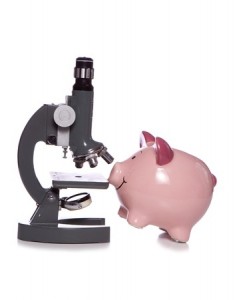
Make sure that your feedback sandwich has plenty of meat.
This is one of a series of posts with advice for people who review grant applications for their friends and colleagues. It is also intended to encourage people writing grant applications to review what you have written before you ask a colleague to read it and tell you something you could have worked out for yourself. My last post argued that a quick and easy way of reviewing a grant application is to check its structure. Good structure makes a grant application easy to read.
Most applications will have very poor structure. If the structure is poor, it is not worth reviewing the detailed content. One reason is that it will take too long. Another is that, even if the content is very good, a funding committee’s enthusiasm for the application will be limited because the poor structure makes it difficult to understand.
At this point I feel honour-bound to confess that I have hesitated a couple of weeks before finishing this post because I know that many people find my feedback a bit too direct. They like to soften criticism by constructing a feedback sandwich that smothers useful comments in copious quantities of praise. My view is that feedback should be clear, it should explain how the proposal can be improved, and it should be delivered as quickly as possible. Feel free to cut and paste from what follows and to wrap it up in whatever form suits you.
The application should have an introduction that states clearly:-
- what goal the project will achieve;
- why the goal is important;
- about three aims, which are things that we need to discover or understand in order to achieve the goal;
- the general research approach;
- about three research objectives, which are pieces of research that will enable us to achieve the aims; and
- what will be done with the results.
These statements are what I call the ‘Key Sentences’. They are a distillation of the argument that the project deserves funding. If the grants committee believe the key sentences, they will almost certainly award a grant. So the rest of the case for support should be designed to make the reader believe the key sentences. It does this by repeating them, and reinforcing them with evidence or explanation.
After the introduction, the case for support has two main sections, each of which repeats six of the key sentences and then justifies or explains them. The background section deals with the goal, the importance and the aims. It should explain, with evidence, why the goal is important and how meeting the aims will achieve the goal. The description of the research project deals with all the rest. It should explain in detail the research approach, the research objectives, and what will be done with the results.
The structure allows a reader to understand the message of the grant in 2 or 3 minutes, by ‘speed-reading’ it. This is very important. The committee that decides whether or not to award the grant will have dozens of other applications to read and discuss. Most members will have a limited understanding of the detailed argument. Some of them will still be reading the application during the final discussion about whether to fund it. All of them will have a say in whether it gets funded. They will be much more enthusiastic to fund an application that they can understand and remember.
The structure also helps the referees who will read the proposal thoroughly and write an evaluation. Each key sentence leads directly to the detailed argument and evidence that justifies and explains it. It is not quite as important to make referees’ task easy because each referee typically only deals with a small number of proposals. Moreover, their enthusiasm will be based on their evaluation of the detailed argument. But it definitely doesn’t hurt to make their task easy.
Opening sentence
The opening sentence must whet the reader’s appetite. The best way to do that is to say what the project will achieve, together with something about how it will achieve it, ideally with a clear implication that the research team are well qualified to do the work. For example, the sentence “This project will develop a new potential treatment for stroke based on a family of synthetic metabolic inhibitors that we have discovered, and synthesised” achieves all this. The reference to discovery and synthesis suggests that the project is a continuation of past work. Of course the suggestion that the project continues previous work does not testify to its importance – that will rest on the opening clause, which states that the project will develop a new potential treatment for stroke.
Draft grant applications quite often have a good opening sentence. But it is not usually at the beginning. Usually it is somewhere towards the middle. Skim through the whole case for support to see if there is a suitable opening sentence that can be moved to the opening position.
It is useful to repeat the opening sentence at the start of the background section, which usually follows after the introduction. It is also useful to open the summary with the same sentence. Repetition of this kind is very good: it helps the reader to remember the essential message. Unfortunately most academics don’t like to repeat a message unless they can confuse readers by using completely different words.
Importance sentence
It’s useful to have a sentence explaining that what the project will achieve is important and to have it follow the opening sentence, which says what the project will achieve. Health, social, or economic benefits are usually, depending on the remit of the funder, good reasons that something is important. Solving a major theoretical problem may also be a good reason. Being the next logical step from the applicant’s previous research is typically not a reason for importance, although mentioning this kind of progression can be a useful way of supporting the proposition that the applicant has the necessary skills to carry out the research.
The importance sentence should also be repeated in the background section and in the summary.
Aims
The aims of the project should be stated immediately after the importance sentence. If you don’t know the difference between aims and objectives (surprisingly, the Oxford Dictionary is rather little help: its definition of ‘objective’ is ‘thing aimed at’), read this excellent post on Pat Thomson’s blog.
I suggest that there should be about four aims. I also think that because funding agencies often ask you to state aims and objectives, you should use them as key parts of the structure. A good way to state an aim is to say that “We need to know” something. There are three important things to check about each stated aim.
The aim should be restated, word for word, in the background section, where it should be followed by a few paragraphs that convince the reader that this is an important aim. Usually they do this by citing appropriate literature. Stating and justifying the aims like this is a device to create a direct link between what the project will do, and an important underlying question that the funder will pay to have answered. It’s also a way of papering over the cracks when the link is a bit tenuous.
The aims of the project should also be stated in the summary. Repeating them exactly, using the same sentences, is a good way of helping the reader to remember them.
Project overview sentence
It is useful to have a sentence that says what kind of research project is envisaged and what the likely outcome will be. It’s often necessary to have something that puts the reader in the right frame of mind for the subproject overview sentences. This sentence should be in the introduction and should be repeated at the start of the section of the proposal that describes the research project in detail.
Sub-project overview sentences (Objectives)
The essential difference between aims and objectives is that, aims tend to be abstract and objectives tend to be concrete. Aims are things that we would like to achieve. Objectives are the concrete things that we will do in order to achieve those aims. Thus the four or so sub-projects that comprise a research project are objectives. Matching the objectives to the aims is a good way of convincing the reader that the research needs to be done: the description of each sub-project should begin with a sentence that includes the phrase “this will tell us” whatever the corresponding aim says “we need to know”.
These sentences should be ‘pre used’ in the introduction and in the summary.
Dissemination
The last substantive sentence in the introduction should say something about what will be done with the results. Again, this sentence should be re-used to introduce the last sub-section of the description of the research project, which should explain it in detail.
So, that’s the filling for the feedback sandwich. How do you wrap it up? I think that it’s up to you to use your judgement. All the wrapping does is to set a baseline. In my view it doesn’t much matter where the baseline is, as long as it is absolutely clear how much the structure of the case for support could be improved.
I should point out that some funders, including several UK Research Councils, require applications to contain a section detailing the achievements of the research team. That section, which is an excellent way of supporting the competence proposition, is in addition to those discussed in this post.




